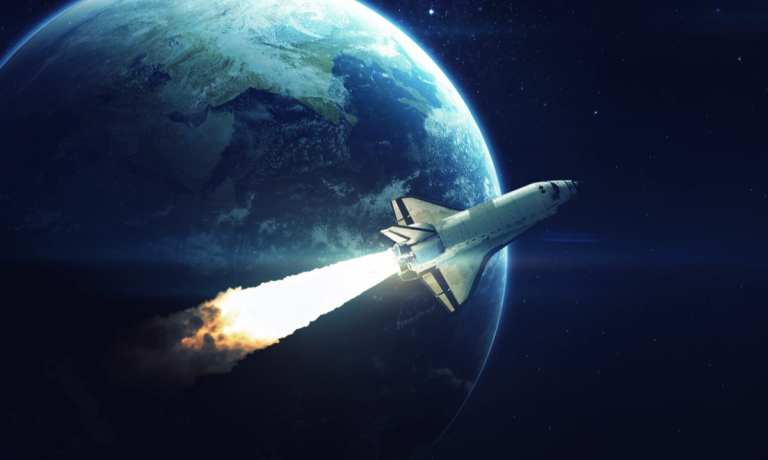
For manufacturing, for supply chains, it’s the last mile indeed that bears the hallmarks of innovation — and perhaps, before too long, the last 100,000 miles. In orbit.
While it may be, on first glance, a flight of fancy to see billionaires launch into space, the fact remains that moving into the stratosphere and beyond may lead to innovations that change the way industry works, the way that we source materials, produce goods, travel and so on.
At this writing, Amazon Founder Jeff Bezos has just completed a trip to bring his Blue Origin craft into space, and did so after Richard Branson took (space) flight earlier this month. According to reports, Tesla’s Elon Musk also will join the space race that seems to be taking shape among the world’s richest individuals.
But, at least, as per Bezos, the push into space would be one that has a larger, perhaps grander view in sight: Back when he was inducted into the International Air & Space Hall of Fame last year, he said, “I believe that, one day, Earth will be zoned residential and light industry. We’ll move all heavy industry into space. That’s the only way, really, to save this planet.”
Changing The Supply Chains
Now, we contend that zoned areas that bring activities involved in polluting the atmosphere, that are energy-intensive (solar energy, it makes sense, is rather abundant in space) — and bringing them into space — may conceivably transform industries such as the semiconductor industry. But let’s get a bit fanciful here.
Might it be the case that the whole logistics landscape, with ripple effects for the last mile, can be transformed by moving parts of the supply chain into the heavens? Picture, then, doing the heavy lifting, so to speak, in space, returning the goods (no matter what they may be, well beyond the confines of chips) by rocket to be refined at Bezos’ conceptual “light industry” centers, moving onto the logistics outposts, carting off everything in energy efficient vehicles, perhaps even using robots to get goods to the end customer.
We’re far away from such realities, where rare and raw materials from other worlds may be mined in space colonies, bringing new innovations to our blue planet that can scarcely be imagined today.
But it should be noted that space travel has, traditionally, yielded innovations that become entrenched in everyday life among the masses who never see the inside of a rocket.
JPL, a federally-funded research center managed for NASA by Caltech, notes that among the innovations tied to previous space trips, travel and exploration, we have freeze-dried food, computers and medical equipment. The ubiquitous cameras on our phones come from the drive to have small devices that could take pictures with accuracy and intimate detail (to aid in research). On this last point, what began as a way to help scientists study what’s real hundreds of thousands of miles from home now helps provide selfies and cat videos that populate our Instagram feeds.
We’re being only a bit tongue in cheek. It may be the case that a trio of billionaires helps spur a wider embrace of space exploration, which in turn filters down into changing the ways in which we manufacture essential items, where we live and how we interact.